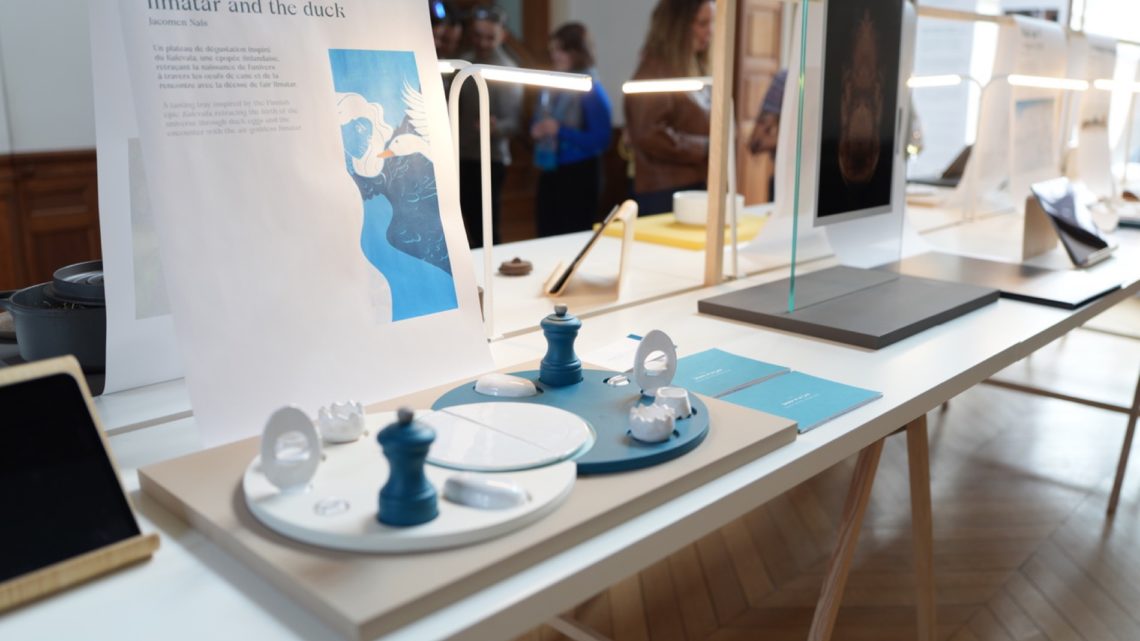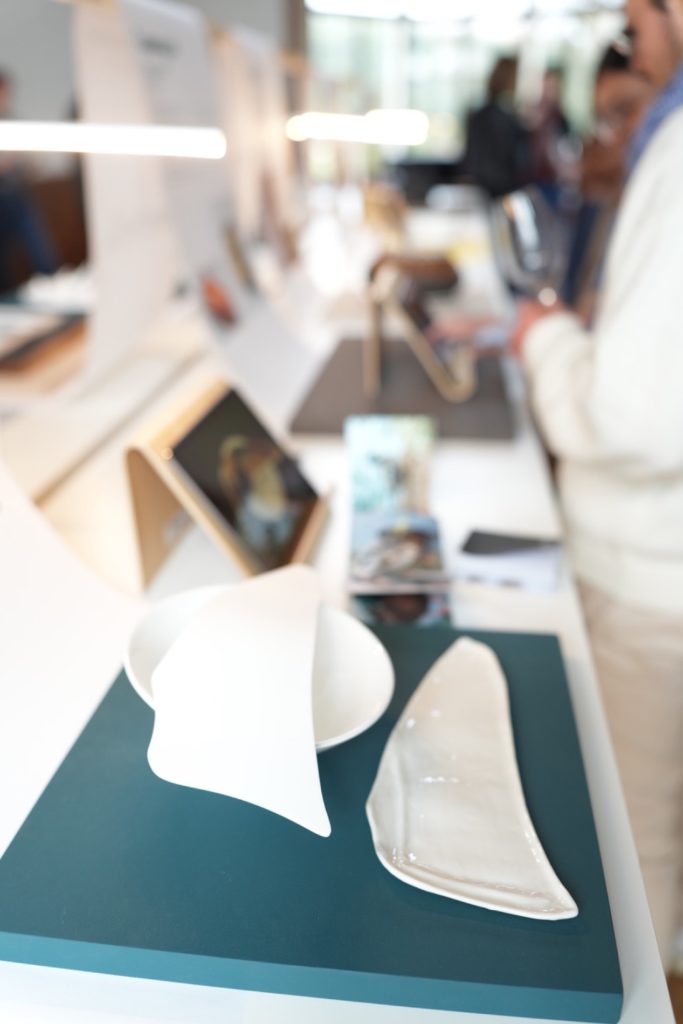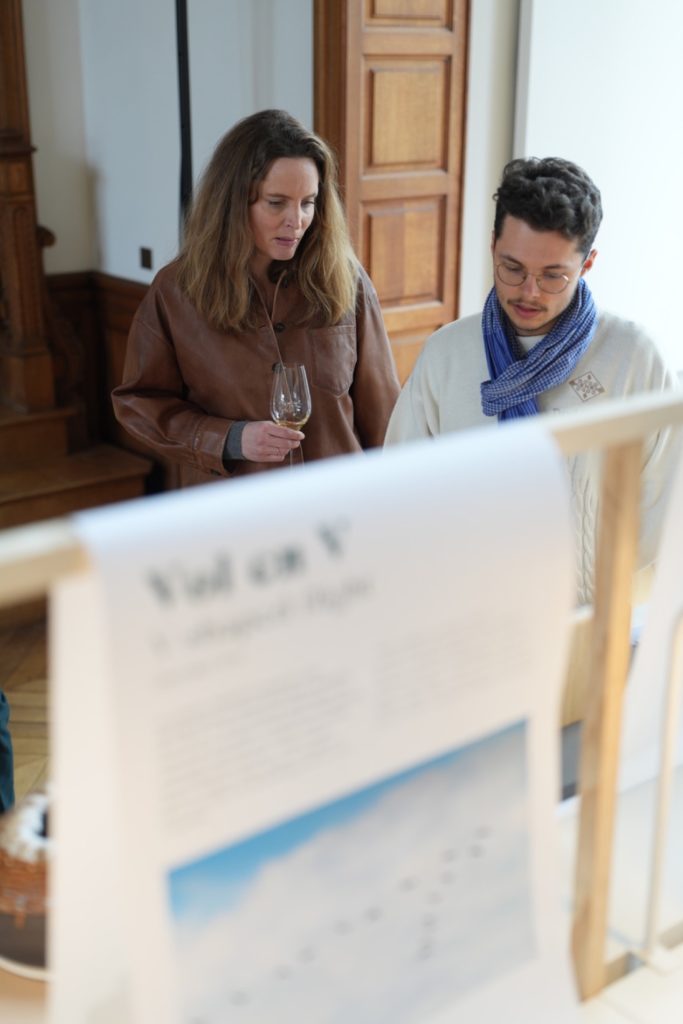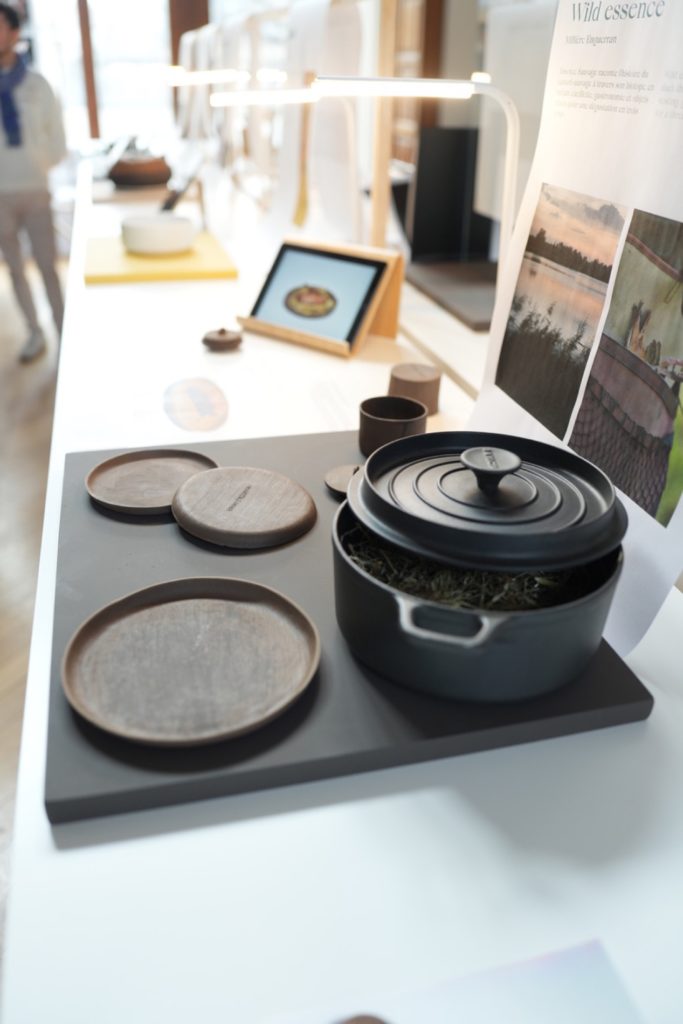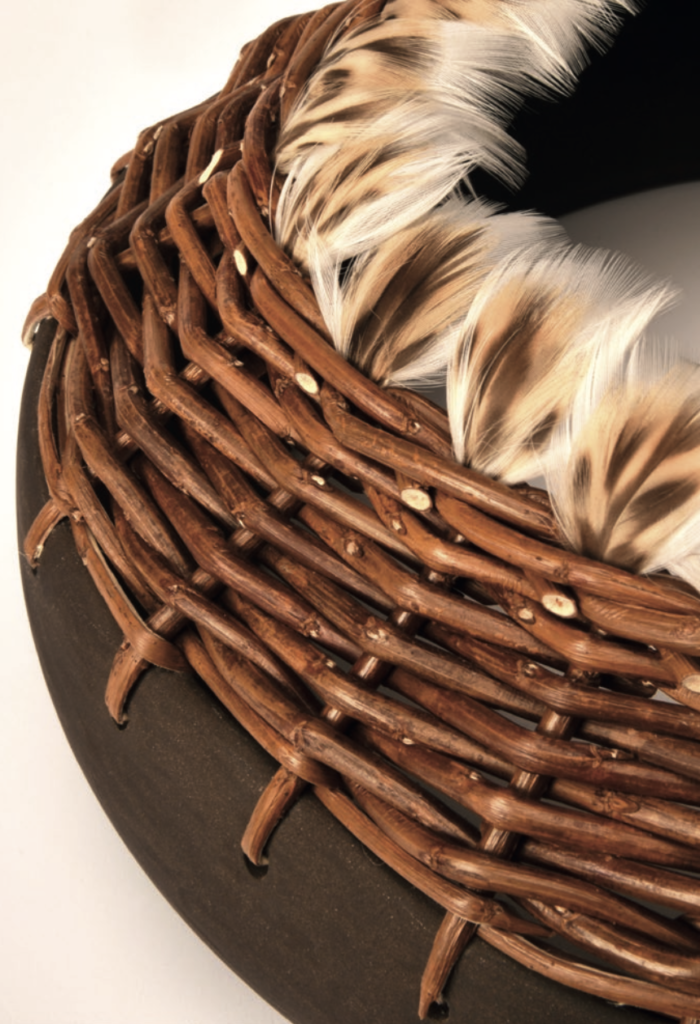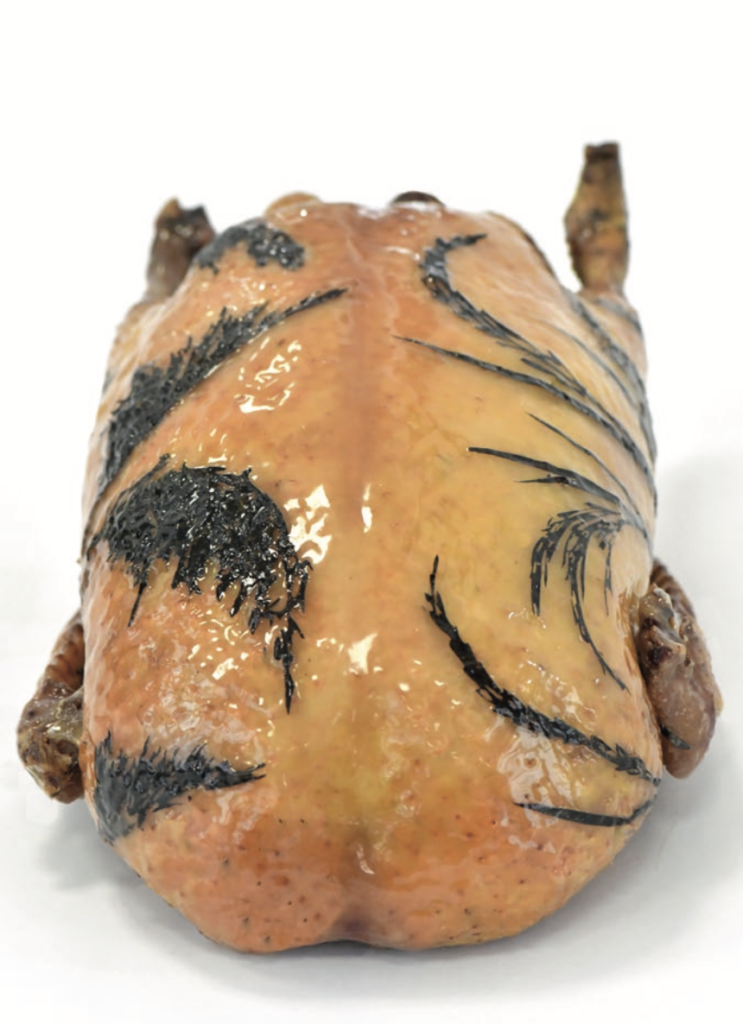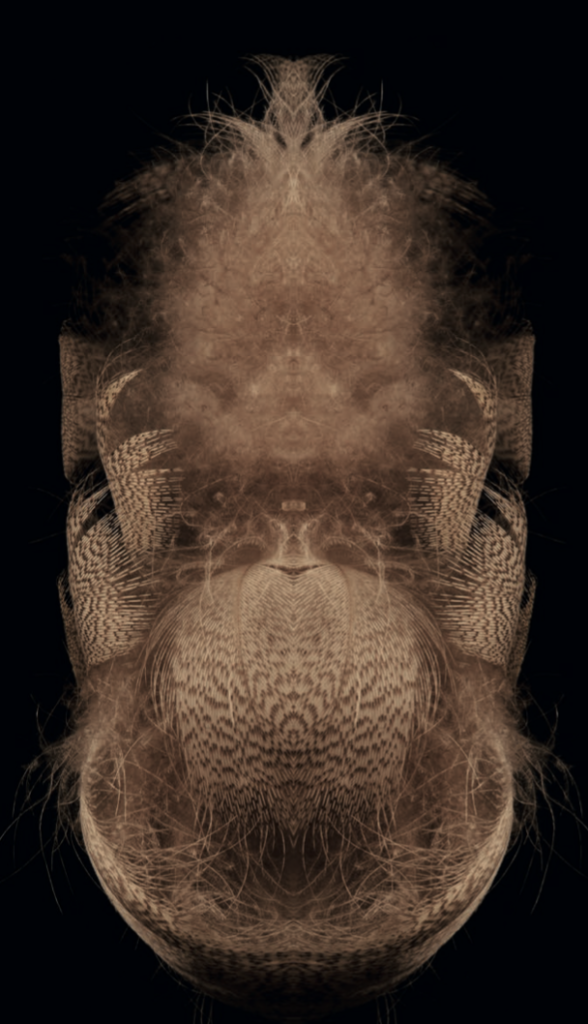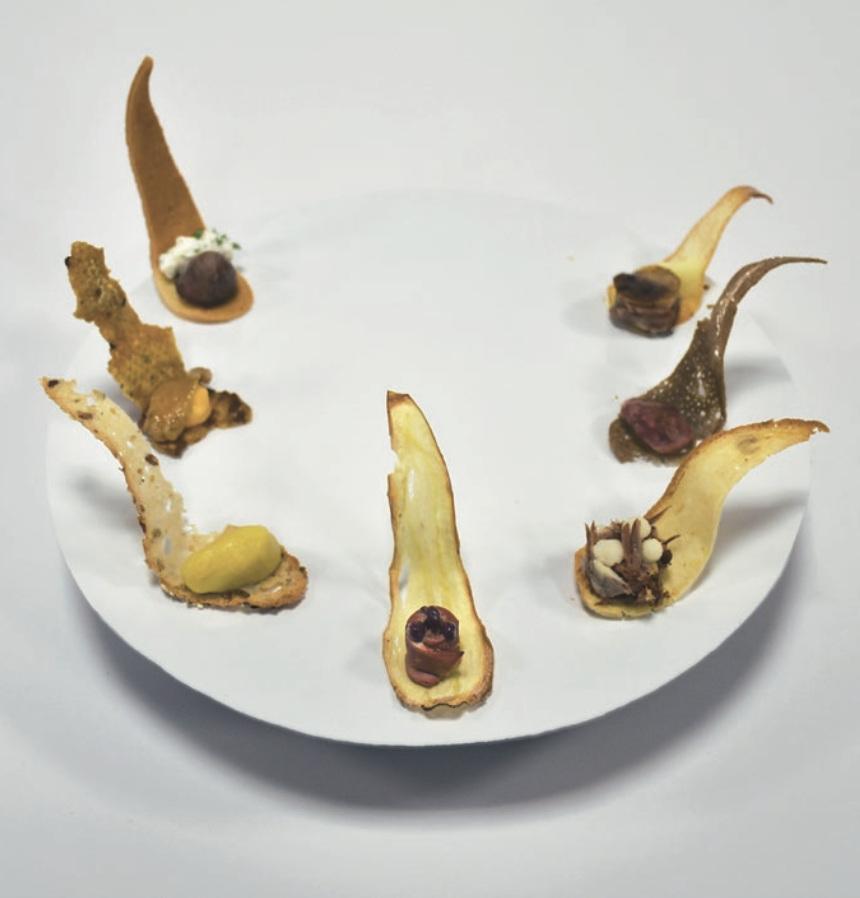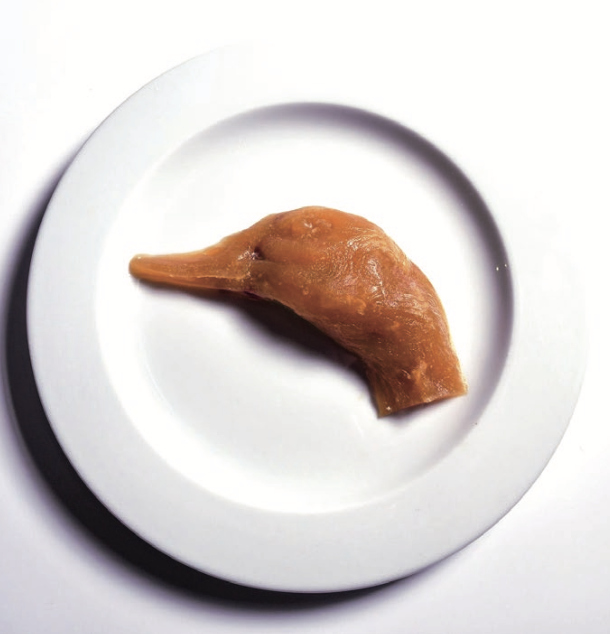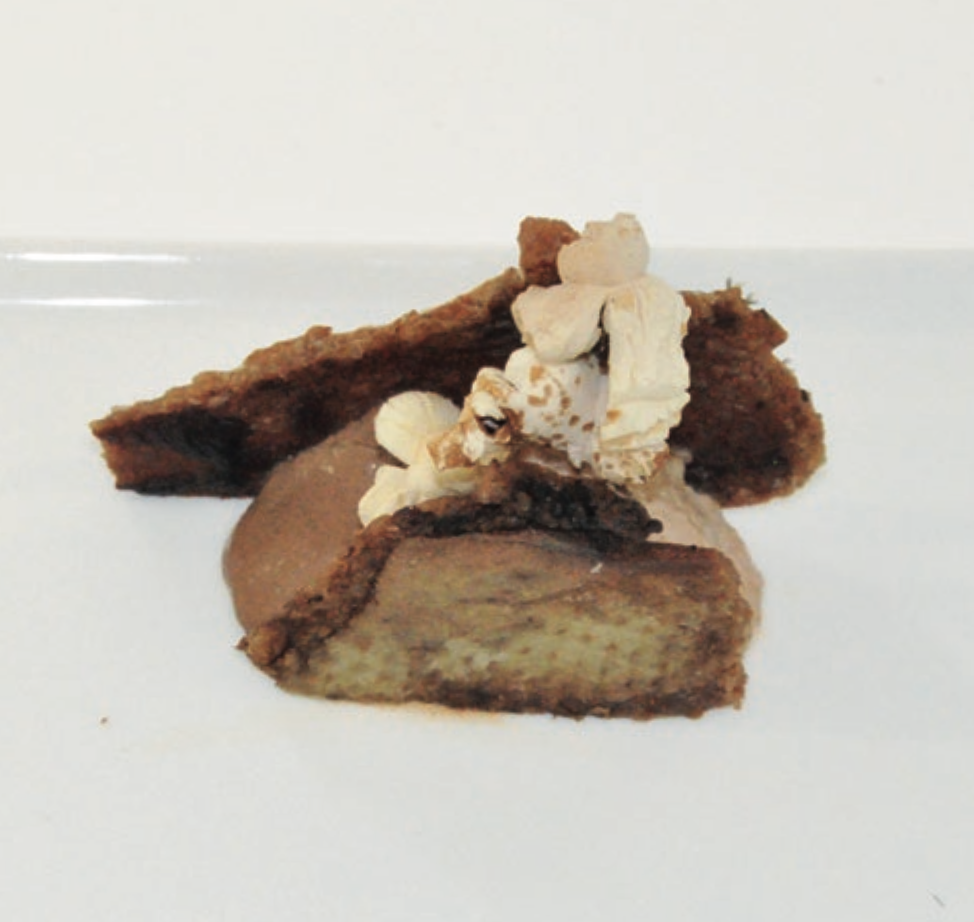Last year, Master’s students in Food Design at the ESAD college of art and design in Reims, coordinated by Germain Bourré, surprised chefs competing for the ArsNova International Culinary Prize (formerly ‘Le Taittinger’) by showcasing their work on the competition’s two flagship products: lobster and pollack. This year, the ArsNova Philanthropic endowment fund – launched by Maison Taittinger – and ESAD wanted to repeat the exercise, which turns the spotlight on the astonishingly creative work produced by these students for chefs in the competition. And so it was canette, female duck and the theme of the 2025 ArsNova Prize, which they had to tackle this year.
It was a bold and sensitive approach that Master’s students in Food Design at ESAD Reims adopted to explore the theme of the 2025 ArsNova Prize: canette or female duck. This exhibition, the result of work combining research, experimentation and know-how acquired throughout their Master’s programme, illustrates the wealth of views about this animal through artistic, scientific and gastronomic perspectives.
From the Bresse region where they discovered the animal in its natural habitat to the kitchens where they explored its culinary uses, the students came up with projects translating their perception of duck and its role in our diet.
From canette in its natural habitat to canette as a gourmet product
While some focused on canette as a food product, others tried to place it in its natural habitat and way of life instead. That was what Alicia Lacourt did with ‘L’Envol’ (Flight) which, through a ‘tasting wing’ composed of foods from different seasons, traced the migration route of wild ducks in the form of taste.
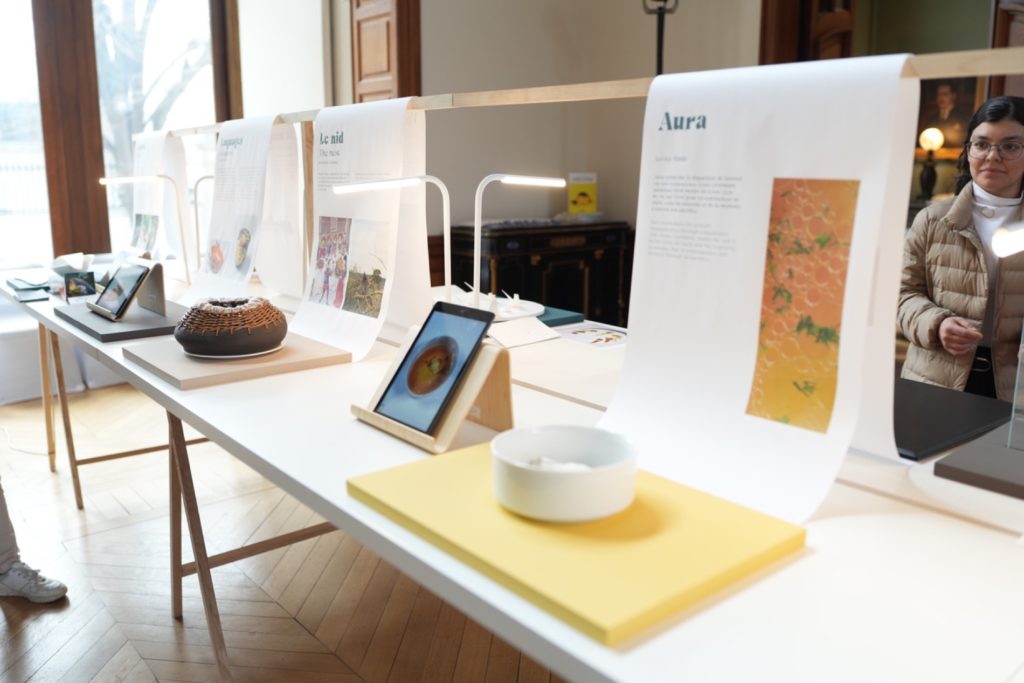
That was also the case with Delphine Daumerie who designed a nest representing the various environments of the female duck with the aim of “putting its animal nature back in the middle of the table”, or even Eva Chevalier who offered in ‘Vol en V’ (V-shaped flight) a gastronomic interpretation of the synchronised flight of ducks. Seven distinct morsels, each dedicated to a specific part of the animal – liver, heart, gizzards, leg, wings, skin and breast – relate the dynamics of their organised flight.
Building bridges between the living animal, the gastronomic product and craftsmanship, Florian Pillard showed the connection between the recipe for lacquered (Peking) duck and craft lacquering with his piece ‘Laquages’ (Lacquers). These two techniques bring out the best of a product with their ability to preserve and the shine of the lacquer. The care taken speaks naturally of respect for the product. Plant patterns taken from the duck’s living environment are integrated into the lacquering as if to honour the animal, recalling its existence before ending up on our plate.
Thinking about ethics
Honouring the animal was also the stance taken by Emile Levrey who designed an object that is somewhere between a table bin and a religious object. The remains of the duck that have just been carved or eaten are intended to be placed inside this object surrounded by candles in order to draw out its last remaining essence. These ethical and philosophical questions are an integral part of the approach taken by the young students on the Master’s Food Design programme. The title of Clara Lenik’s project, ‘Gène-éthique’ (Gene-ethics), is a perfect illustration of this. Her photographic work questions cross-breeding and the links between science and cooking. This approach urges us to reconsider the way we modify and select species for human consumption.
Through this exhibition put on for chefs competing for the 2025 ArsNova Prize, the Master’s students at ESAD Reims have shown once again that food design is not just about creating objects or dishes. It is a space for freedom and experimentation that can be used as a tool for thinking about our relationship with living things, our consumption and our traditions. The exhibitions, which are now organised every year on the theme of the ArsNova Prize, encourage us to wake up to the fact that gastronomy is also the story of how we view the world.

“Flight” by Alicia Lacourt and “Ilmatar and the duck” by Jacomen Naïs

